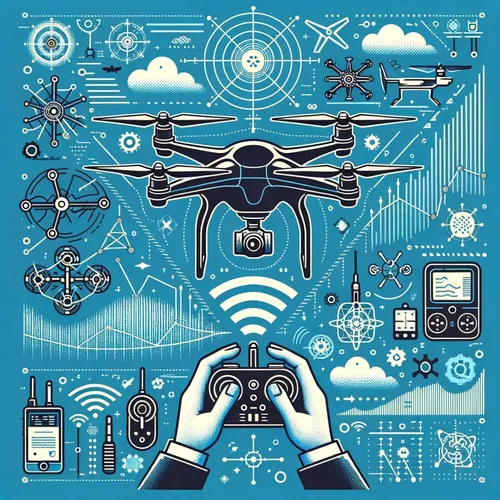Drones Soar, Execs Score: Insider Secrets Powering Sky-High Profits
- Author
- Quiet. Please
- Published
- Mon 25 Aug 2025
- Episode Link
- https://www.spreaker.com/episode/drones-soar-execs-score-insider-secrets-powering-sky-high-profits--67502921
This is you Commercial Drone Tech: Enterprise UAV Solutions podcast.
Commercial drone technology now stands as an essential pillar for enterprise innovation, delivering measurable impact across construction, agriculture, energy, and infrastructure. In construction, drones drastically cut survey times and costs, with McKinsey reporting that drone-based site analysis has reduced labor needs by up to 70 percent on major projects. Agricultural operators leverage drones for precision spraying and crop health assessment, which Trimble notes can boost yields by up to 20 percent while reducing excess input costs. In the energy sector, real-time aerial inspections of power lines and wind farms enable safer, more frequent preventive maintenance, directly slashing downtime and risk.
Enterprises gain strong return on investment from drone adoption, as demonstrated by case studies in which infrastructure inspection firms have reduced project timelines from weeks to days and saved hundreds of thousands of dollars per year in labor and remediation. These tangible gains hinge on effective fleet management. Platforms such as Airdata and Auterion allow businesses to track aircraft health, automate compliance documentation, and schedule predictive maintenance, providing a digital command center that maximizes both uptime and regulatory adherence. According to the Drone Industry Insights research, the global commercial drone market is expected to reach nearly 60 billion dollars by 2030, with double-digit year-over-year growth.
Fleet management and integration with existing software ecosystems is critical. Advanced solutions, including cloud-based tools from Votix and FlytBase, offer seamless mission planning, data processing, and cross-system interoperability. Integration into business intelligence platforms means flight data instantly informs project management and resource allocation decisions. Security and compliance have become non-negotiable, particularly given evolving national and international regulations. Enterprise platforms provide encrypted data storage, real-time monitoring, and automated compliance reporting to meet strict industry and government standards.
Recent news underscores this momentum. DJI’s latest FleetHub 2 update introduced new real-time collaboration and analytics functions for major utilities, while partnerships between major construction conglomerates and drone software firms continue to headline industry media. Notably, Skyward’s recent deployment with a nationwide rail company sets a new benchmark for scalable, safe unmanned aerial vehicle operations in hazardous environments.
Practical takeaways for enterprise leaders include evaluating drone management platforms that support open APIs for future scalability, ensuring comprehensive pilot training programs, and choosing hardware that aligns with your organization’s core use cases, whether it is high-resolution imagery or advanced sensors. The future promises more autonomous drone fleets, integration with artificial intelligence for fixed asset monitoring, and even wider regulatory harmonization.
Thank you for tuning in. Come back next week for more. This has been a Quiet Please production, and for me check out Quiet Please Dot A I.
For more http://www.quietplease.ai
Get the best deals https://amzn.to/3ODvOta
